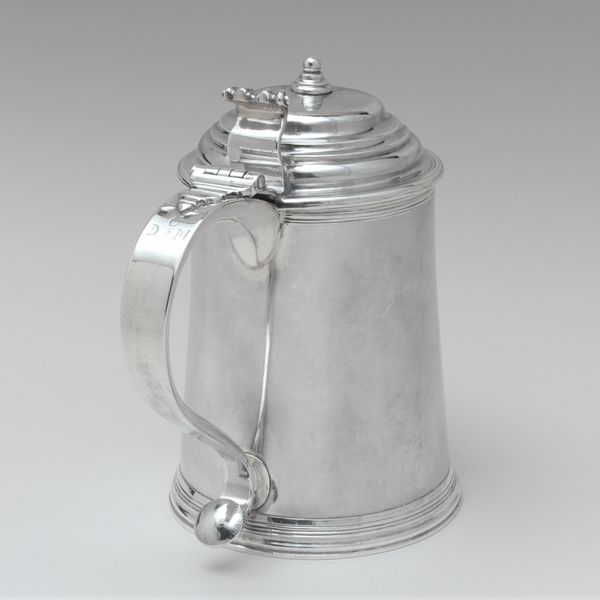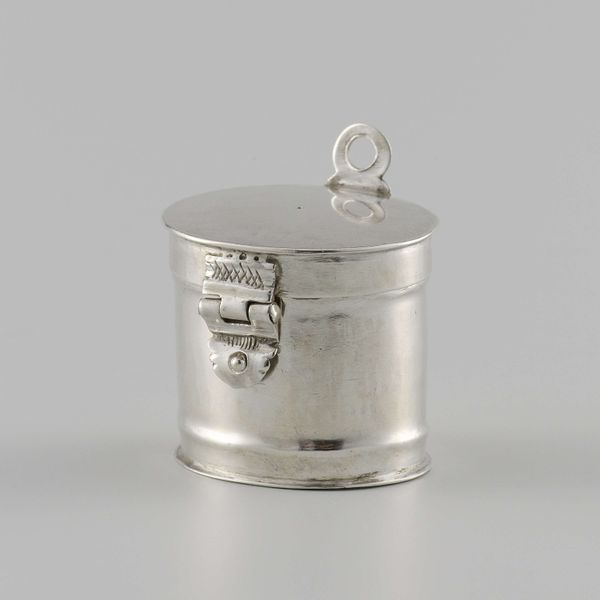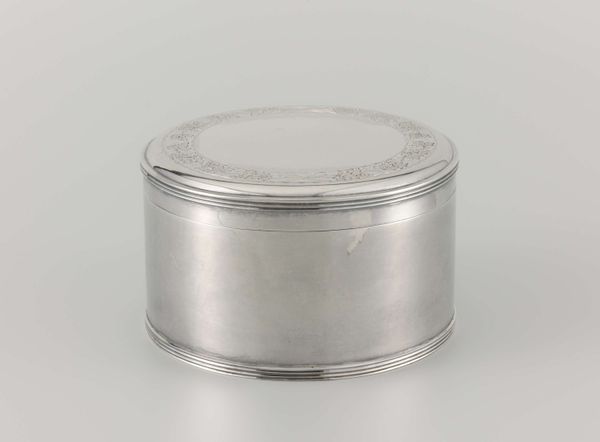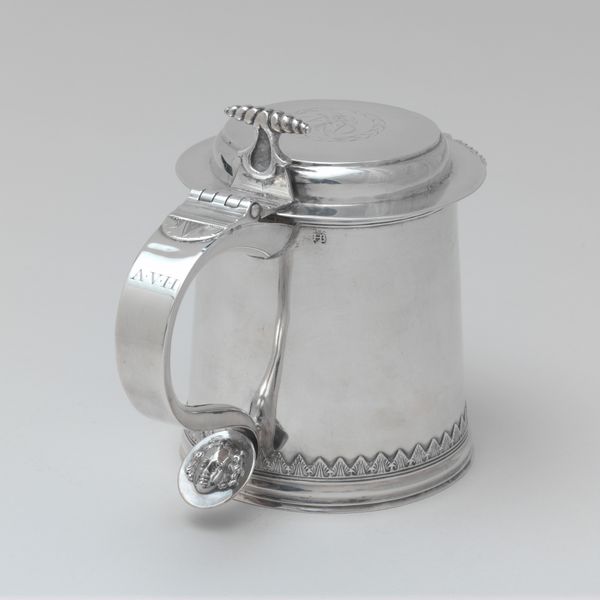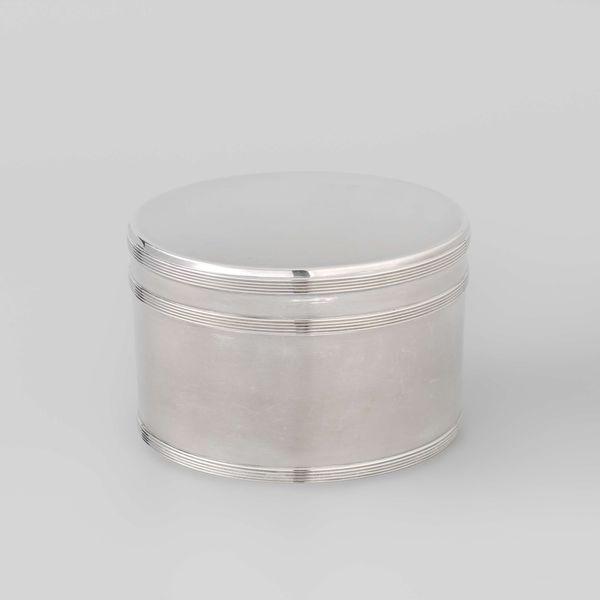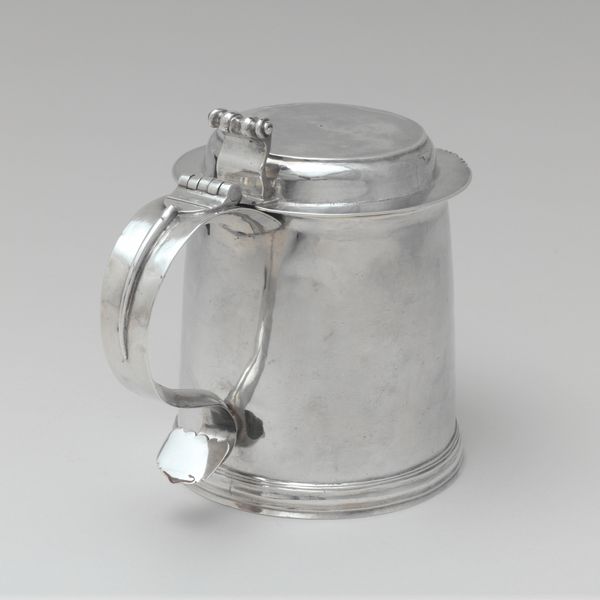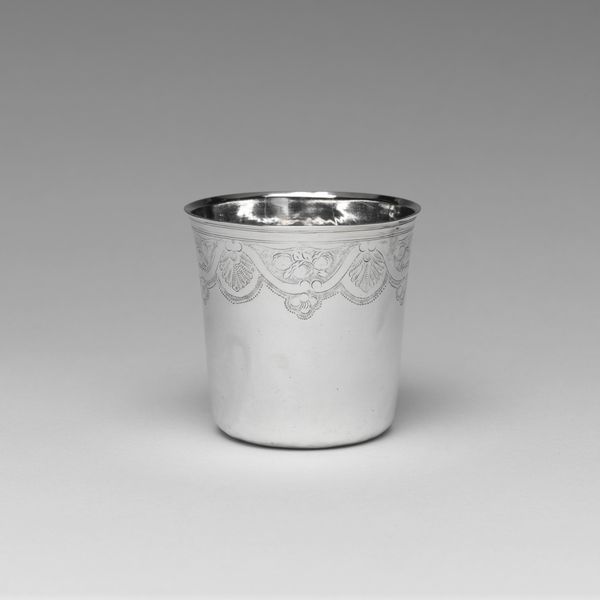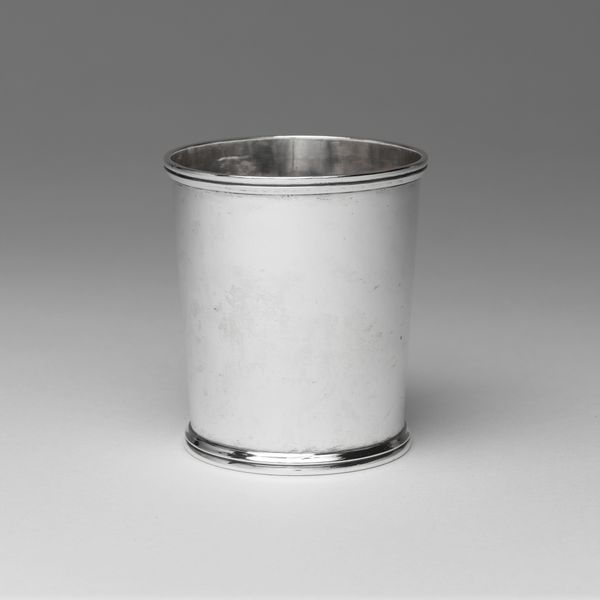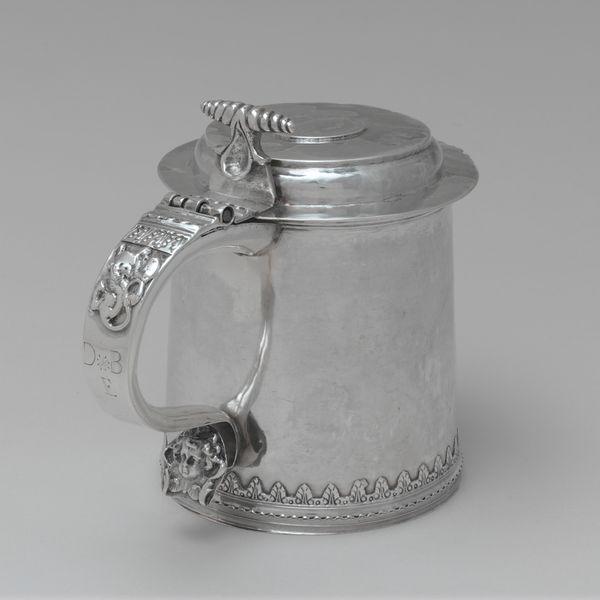
silver
#
silver
#
decorative-art
Dimensions: 12.1 × 8.9 cm (4 3/4 × 3 1/2 in.)
Copyright: Public Domain
Curator: Here we have a silver Tea Caddy created by William Moulton, IV, dating between 1801 and 1825. Editor: It's unassuming at first glance, but the polished surface almost glows. Its simplicity has a very austere, almost melancholic mood, wouldn't you agree? Curator: Certainly, and this speaks volumes about the object's creation and function. A tea caddy like this was less about overt display and more about secure, domestic storage. The labor required to work silver—the silversmithing techniques—were all about achieving refinement. Editor: Secure, indeed. Tea became intrinsically tied to systems of colonialism, and owning an exquisite tea caddy during this era speaks to both wealth and a complicit participation in those very systems. The decorative frieze around the lid feels particularly charged now, almost like an ironic crown. Curator: Precisely. While the shape is relatively standard, it is crafted through highly specialized knowledge passed down through apprenticeship and workshops, indicative of industrial networks supporting luxury consumption in the period. Notice the evenness of the silver, the precisely formed edges. These features point to an efficient and well-oiled workshop. Editor: It begs the question of who did that labor. Were these pieces crafted exclusively for affluent white households, maintaining hierarchies based on class and racial power? I wonder how accessible or inaccessible the necessary artistic training and skill were. Curator: These objects are artifacts of both great craft and structures that have upheld wealth. We are invited to interrogate the sources of raw materials, manufacturing practices, and distribution chains that shaped society then. Editor: Reflecting on its quiet beauty juxtaposed against complex legacies feels imperative. Hopefully, this allows us to reframe conversations about how functional decorative objects become markers of empire, complicity, and—in equal measure—cultural exchange.
Comments
No comments
Be the first to comment and join the conversation on the ultimate creative platform.
